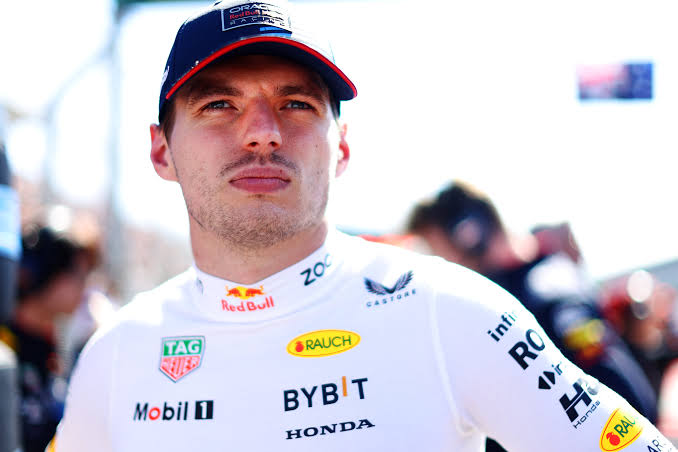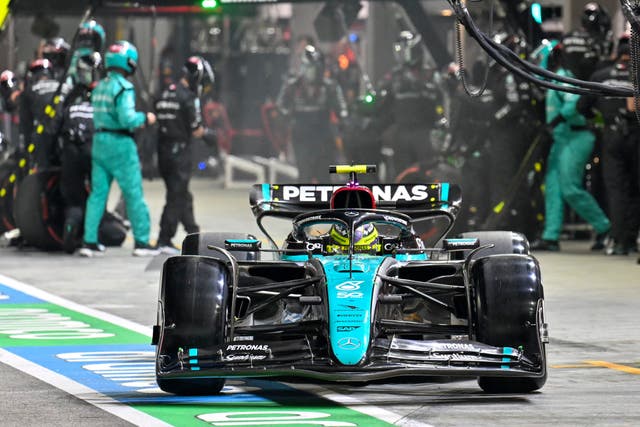Red Bull driver Max Verstappen has admitted that the team still have “some problems” over kerbs and bumps with the new RB21 car for the F1 2025 season.
And he has vowed to “keep harping on” about the car’s weakness as he targets a fifth consecutive World Championship this year.
Max Verstappen: Red Bull RB21 struggling over bumps and kerbs
Verstappen sealed a fourth straight title in 2024, seeing off the threat of McLaren driver Lando Norris to seal the World Championship with two races to spare.
It came after the Dutchman suffered his longest barren run in four years, going 10 races without a win between June and November as Red Bull lost their way with the development of the RB20 car.
Despite starting the season in dominant fashion, the 2024 chassis struggled at bumpy circuits and tracks where kerb usage is critical to laptime, with the issue first raising its head at the Monaco Grand Prix where Verstappen could only manage a distant sixth.
Red Bull have sought to address the issue over the winter to give Verstappen and new team-mate Liam Lawson a more stable platform with the RB21.
Speaking after last month’s pre-season test in Bahrain, however, Red Bull technical director Pierre Waché conceded that he was “not as happy as I could be” entering the season-opening Australian Grand Prix.
Waché went on to admit that the RB21 “did not respond how we wanted at times” to setup changes, a common complaint aimed at the car’s predecessor, raising doubts over how much progress Red Bull have made ahead of the new season.
In an assessment of the 2025 car’s strengths and weaknesses, Verstappen revealed that the RB21 feels “a bit more together” on corner entry and through the mid-corner phase.
However, he admitted that kerbs and bumps still pose a problem for Red Bull despite efforts to rectify the issue.
Asked how the RB21 feels different to its predecessor, Verstappen told Viaplay: “In terms of balance, maybe a bit more together at the entry to the middle of the corner.
“But on the other hand, of course, there are still some problems with the kerbs, the bumps.
“That’s obviously not our strong point with us, but I just keep harping on that.
“Of course, it doesn’t always have to be said to the outside world, but during the meetings we talk about it a lot.”
Asked if the car’s understeer balance has been fixed for 2025, he added: “That could be better too.”
Verstappen’s latest comments come after he admitted that Red Bull are unlikely to be in contention for victory in Australia with McLaren entering the F1 2025 curtain raiser as strong favourites.
He explained: “[There is] work to do [at Red Bull]. If you look at the lap times, I do think McLaren is the favourite.
“For us, not everything went completely smoothly [in testing] either, but on the other hand I do think we have ideas on how to improve.
“I spent a lot of time in the simulator with the team. I don’t think we can compete for the win [in Australia], but I do hope we can already make some improvements in a few races.”
Asked if he is satisfied with the progress Red Bull have made over the winter, he added: “Well, it’s never good enough, of course.
“But I think we ourselves might have expected a tiny bit more from it in Bahrain, even though I do think that after the test we obviously have a bit more time to go through the data.
“Then of course you also come to certain conclusions, so I do think it can all be tuned more optimally in Melbourne.
“But like I said, I think we do have some things to improve.”
Despite Verstappen’s dominant start to last season, which saw him win seven of the first 10 races to establish what proved to be an insurmountable points lead, his father Jos revealed that the Red Bull driver could sense that the RB20’s balance was “not right” early on.
Speaking to the Coen en Sander show in the Netherlands last August, Verstappen said:
“At the beginning of the season, when you then win races, then of course it all feels right.
“But he also said then that the balance is not right. Of course, that was not brought out at the time.
“They then try to keep that inside [the team]. He complained about the balance there too. Max actually complained about it about three months ago.
“Only they didn’t really believe it. Or they didn’t really see it.
“Now, you’re actually a bit too late.”
In an exclusive interview during pre-season testing in Bahrain, Waché explained that the team have aimed to “reduce” the overall potential of the car in favour of making the RB21 easier to drive.
Under the ground-effect rules introduced in 2022, F1 teams have grappled with the challenge of adding more downforce to the car without inadvertently triggering undesirable characteristics like porpoising.
Waché said: “I don’t want to say too much, but it’s clear that we had a very, very peaky car [in 2024] with high potential that was difficult to extract.
“If we wanted to extract this, it was creating some difficulty for the driver to use it and, especially in slow corners, giving some instability for the driver to use it.
“What we did this year is to maybe reduce the complete potential of the car, the peakiness, but giving a more easy way to use by the driver – that’s what our main purpose was, especially on the entry of the corner.
“It’s not as simple as that, because it’s a characteristic that the peak of downforce is not only on one dimension.
“It’s a multi-dimensional system that is not only downforce. It is also suspension-wise and what the kinematics [are] doing, but is an overall car characteristic of how the driver feels.
“But fundamentally, it’s exactly that – reduce the overall potential in grip and capacity of the car to make it more flat.
“That’s what we are seeing at the moment.
“Last year, we had a quite difficult car and, to rebalance it, it would put you in a corner in terms of what you could do [with setup].
“Now it is giving us a wider range of setups that we have to explore and it will take time to see what the best compromise is.
“The compromise could be quite different from track to track, because it gives us a lot more freedom.”



